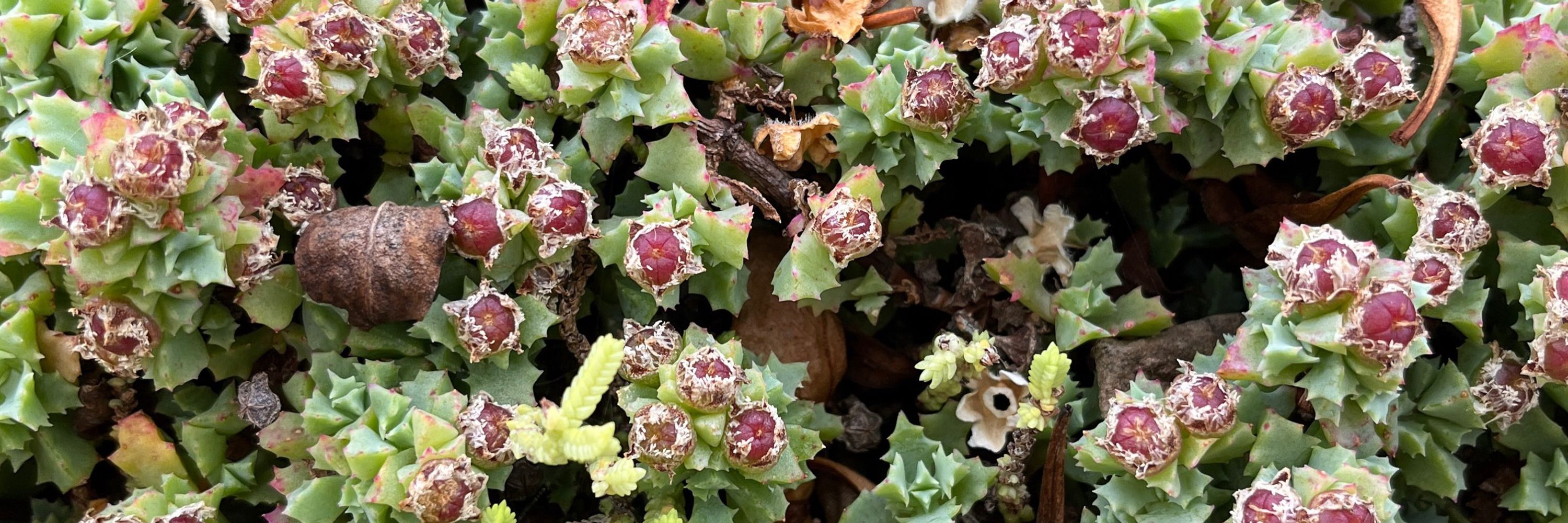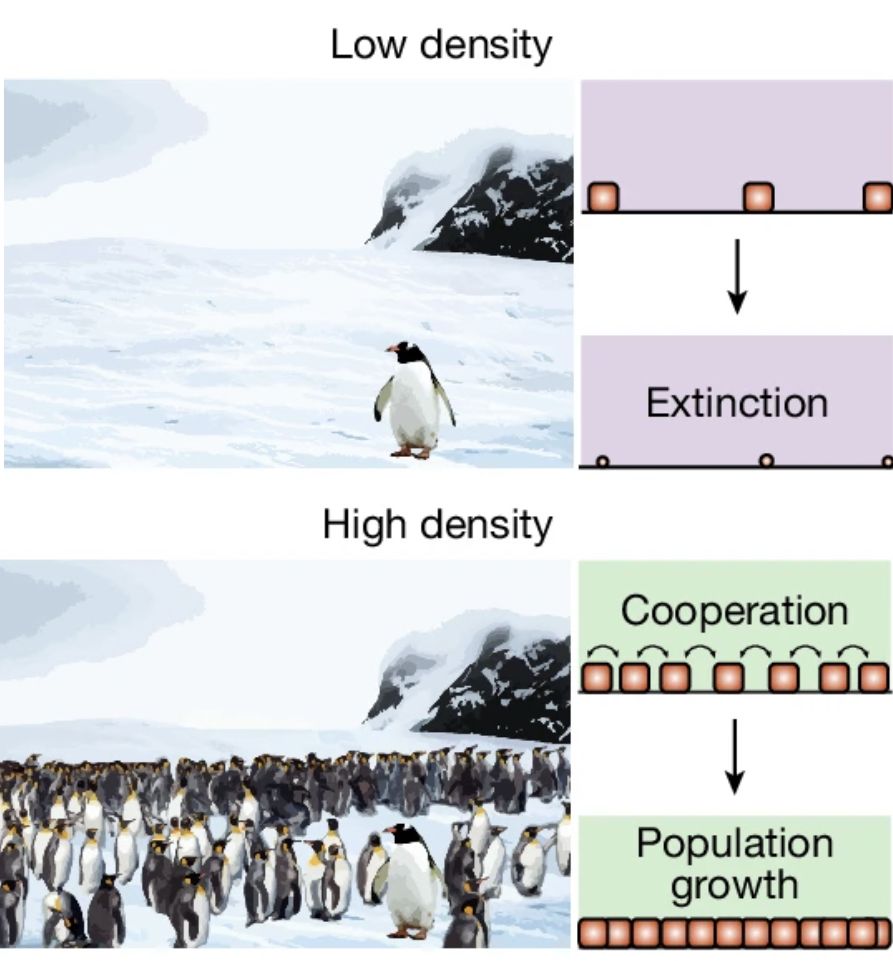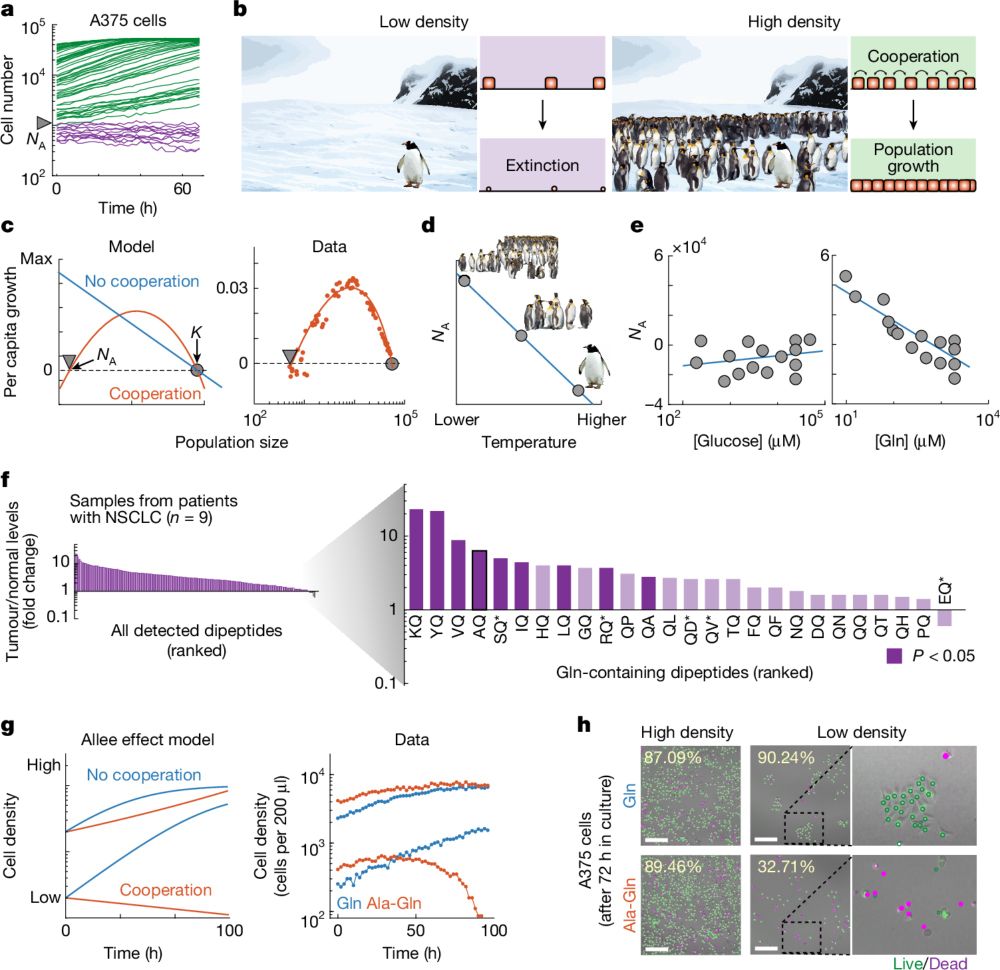Carmofon Lab
@carmofonlab.bsky.social
1.1K followers
100 following
16 posts
Carmona-Fontaine Lab.
Interested on Cancer origins and how nutrients and social cellular interactions affect the Tumor Geography, Ecology, and Evolution.
Part of the Center for Genomics & Systems Biology and the Department of Biology at
Posts
Media
Videos
Starter Packs
Reposted by Carmofon Lab
Shicheng Guo
@shihcheng.bsky.social
· Apr 2

Cooperative nutrient scavenging is an evolutionary advantage in cancer | Nature
The survival of malignant cells within tumours is often seen as depending on ruthless competition for nutrients and other resources1,2. Although competition is certainly critical for tumour evolution and cancer progression, cooperative interactions within tumours are also important, albeit poorly understood3,4. Cooperative populations at all levels of biological organization risk extinction if their population size falls below a critical tipping point5,6. Here we examined whether cooperation among tumour cells may be a potential therapeutic target. We identified a cooperative mechanism that enables tumour cells to proliferate under the amino acid-deprived conditions found in the tumour microenvironment. Disruption of this mechanism drove cultured tumour populations to the critical extinction point and resulted in a marked reduction in tumour growth in vivo. Mechanistically, we show that tumour cells collectively digest extracellular oligopeptides through the secretion of amin
doi.org
Carmofon Lab
@carmofonlab.bsky.social
· Apr 10
Reposted by Carmofon Lab
Carmofon Lab
@carmofonlab.bsky.social
· Apr 10
Reposted by Carmofon Lab
Barak Rotblat
@barakrotblat.bsky.social
· Feb 23
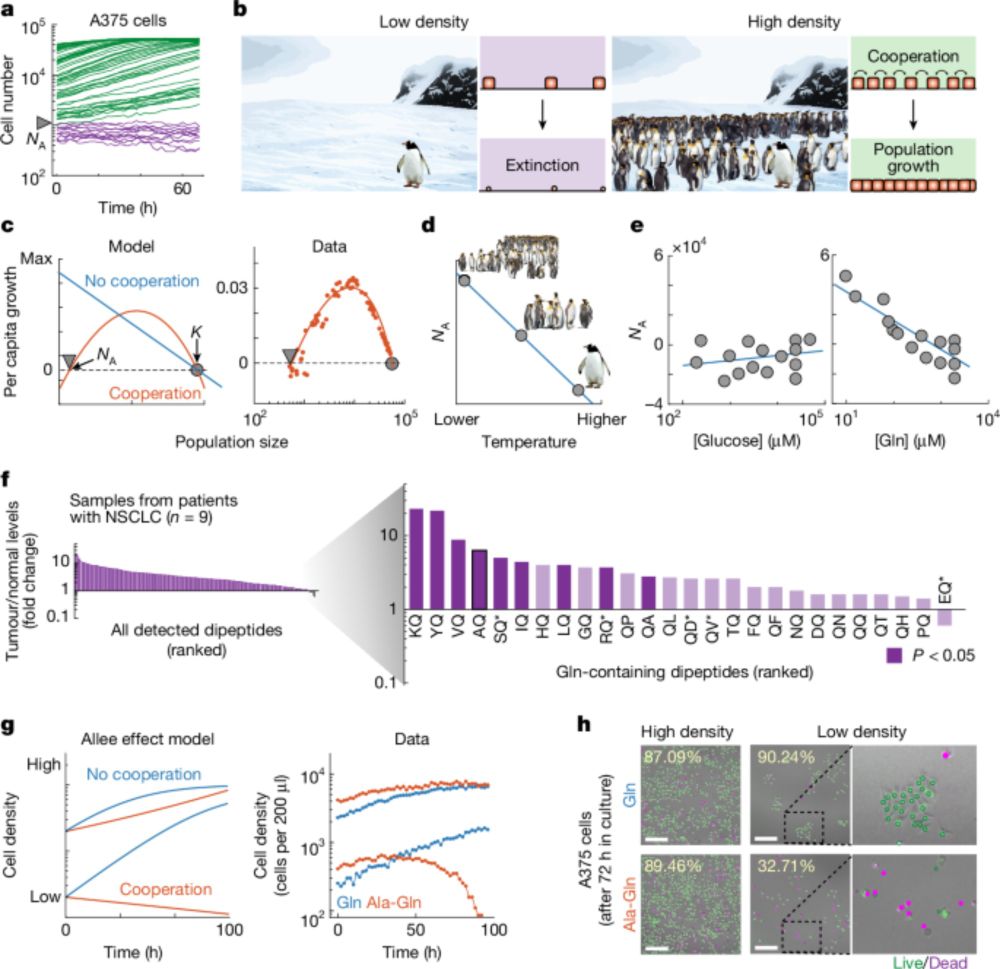
Cooperative nutrient scavenging is an evolutionary advantage in cancer - Nature
Nutrient-starved tumour cells cooperate by secreting aminopeptidases that digest oligopeptides in the microenvironment, creating a shared pool of free amino acids.
www.nature.com
Carmofon Lab
@carmofonlab.bsky.social
· Mar 2
Carmofon Lab
@carmofonlab.bsky.social
· Mar 1
Iain Couzin
@icouzin.bsky.social
· Feb 27
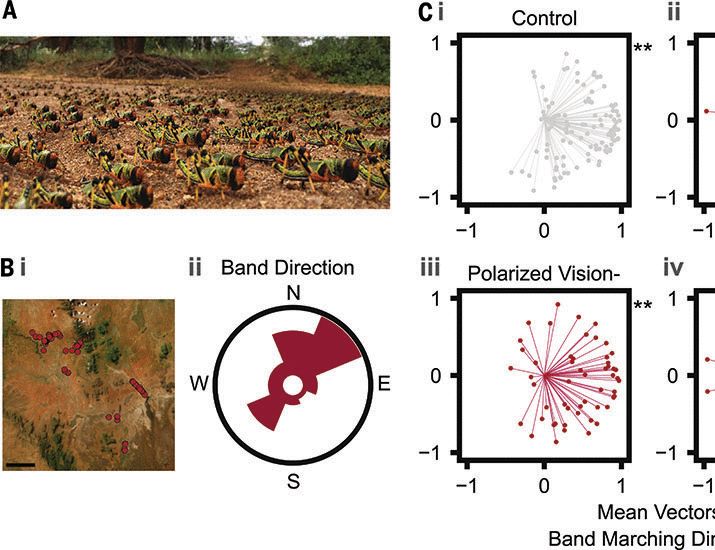
The behavioral mechanisms governing collective motion in swarming locusts
Collective motion, which is ubiquitous in nature, has traditionally been explained by “self-propelled particle” models from theoretical physics. Here we show, through field, lab, and virtual reality e...
www.science.org
Reposted by Carmofon Lab
Iain Couzin
@icouzin.bsky.social
· Feb 27

The behavioral mechanisms governing collective motion in swarming locusts
Collective motion, which is ubiquitous in nature, has traditionally been explained by “self-propelled particle” models from theoretical physics. Here we show, through field, lab, and virtual reality e...
www.science.org
Carmofon Lab
@carmofonlab.bsky.social
· Feb 24
Reposted by Carmofon Lab
Barbara Marte
@barbmarte.bsky.social
· Feb 20
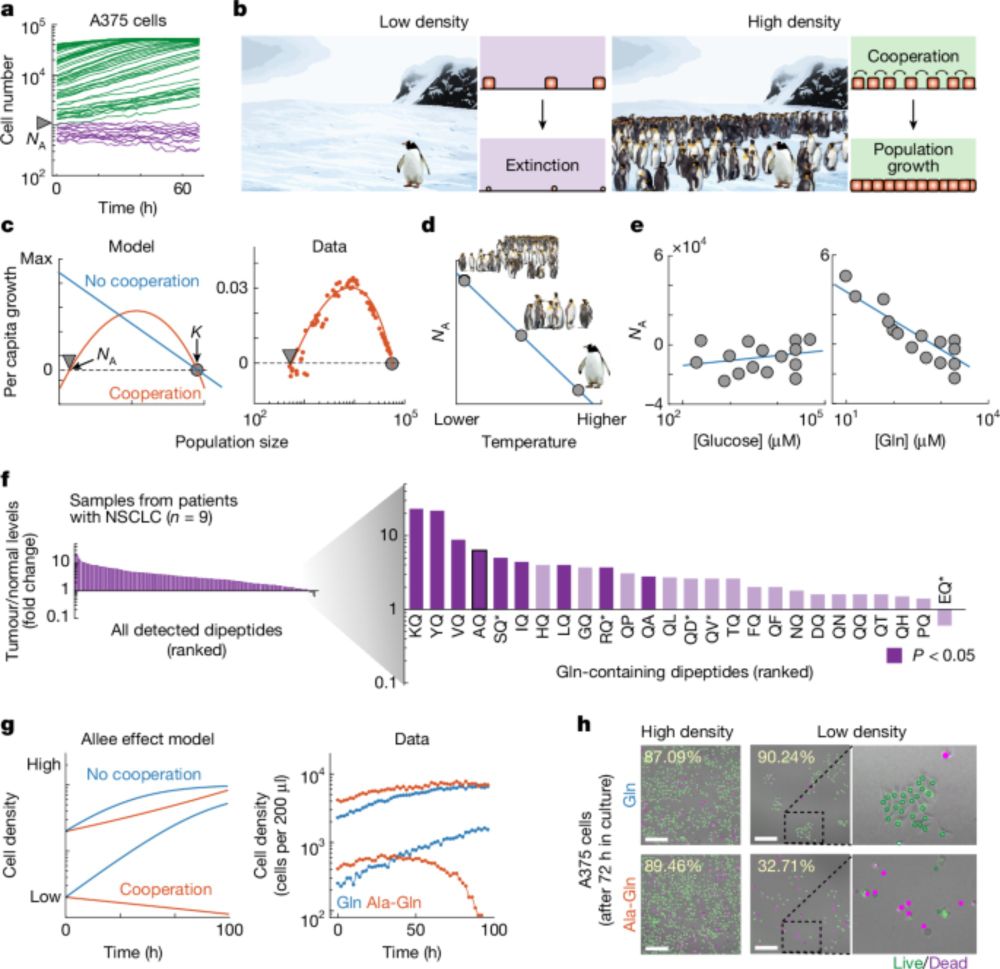
Cooperative nutrient scavenging is an evolutionary advantage in cancer - Nature
Nutrient-starved tumour cells cooperate by secreting aminopeptidases that digest oligopeptides in the microenvironment, creating a shared pool of free amino acids.
www.nature.com
Carmofon Lab
@carmofonlab.bsky.social
· Feb 20

Cooperative nutrient scavenging is an evolutionary advantage in cancer - Nature
Nutrient-starved tumour cells cooperate by secreting aminopeptidases that digest oligopeptides in the microenvironment, creating a shared pool of free amino acids.
www.nature.com
Carmofon Lab
@carmofonlab.bsky.social
· Nov 24
Carmofon Lab
@carmofonlab.bsky.social
· Jan 1
Carmofon Lab
@carmofonlab.bsky.social
· Dec 26
Carmofon Lab
@carmofonlab.bsky.social
· May 7
